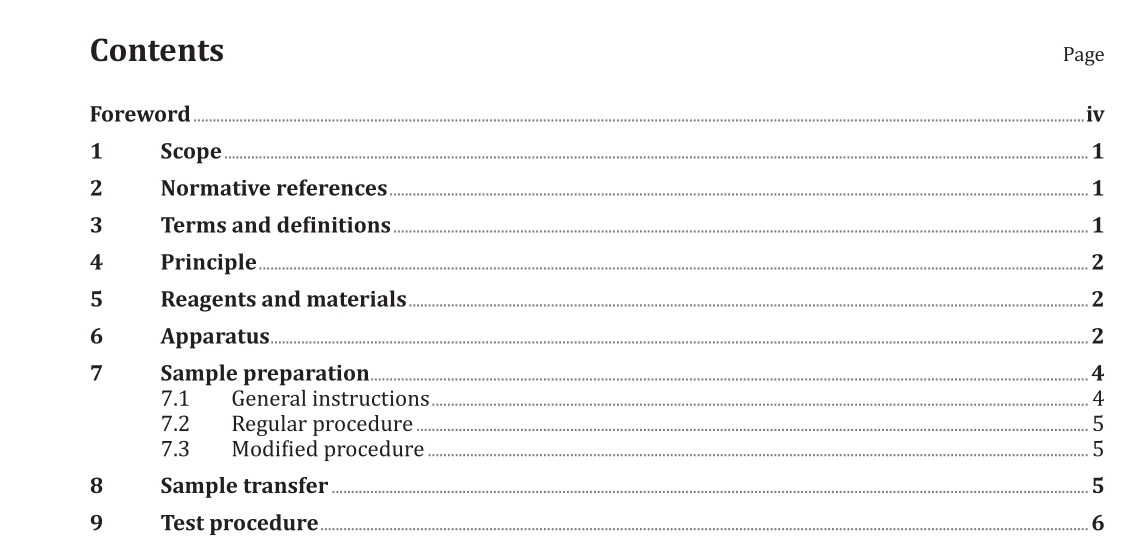ISO 10370:2014 pdf download.Petroleum products — Determination of carbon residue — Micro method
1 Scope
This International Standard specifies a method for the determination of the amount of carbon residue, in the range 0,10 % (m/m) to 30,0 % (m/m), left after evaporation and pyrolysis of petroleum products under specified conditions. NOTE 1 The carbon residue value serves as an approximation of the tendency of petroleum products to form carbonaceous deposits under similar degradation conditions, and may be useful in the assessment of relative carbon-forming tendencies of products within the same class. In this case, care should be taken in the interpretation of results. For products which yield a residue in excess of 0,10 % (m/m), the test results are equivalent to those obtained by the Conradson carbon residue test (see ISO 6615 [1] ) in the range of 0,10 (m/m) to 25,0 (m/m) (for details see Annex A). This International Standard is also applicable to petroleum products which consist essentially of distillate material, and which may yield a carbon residue below 0,10 % (m/m). On such materials, a 10 % (V/V) distillation residue is prepared by the procedure described in 7.3.1 and 7.3.2 before analysis. Both ash-forming constituents, as defined by ISO 6245 [2] and non-volatile additives present in the sample add to the carbon residue value and are included in the total value reported. NOTE 2 The presence of organic nitrates incorporated in certain distillate fuels will yield abnormally high values for the carbon residue. The presence of alkyl nitrate in the fuel may be detected by ISO 13759. [3]
2 Normative references
The following documents, in whole or in part, are normatively referenced in this document and are indispensable for its application. For dated references, only the edition cited applies. For undated references, the latest edition of the referenced document (including any amendments) applies.
ISO 3405, Petroleum products — Determination of distillation characteristics
6 Apparatus
6.1 Glass sample vials, of 2 ml capacity, 12 mm outside diameter, approximately 35 mm high. A vial of 4 ml capacity, 12 mm outside diameter, approximately 72 mm high may be used with samples of very low carbon residue content, i.e. below approximately 0,20 % (m/m), but no precision data has been obtained for them. NOTE 1 An interlaboratory study [4] has been carried out by the Energy Institute on the 10 % volume distillation residue procedure for middle distillates using 4 ml vials and automatic distillation units and the precision is given in Clause 12. NOTE 2 A glass sample vial of approximately 20 ml capacity (20,5 mm to 21 mm outside diameter by (70±1) mm high) for samples that are expected to yield residues < 0,10 % (m/m) may also be used, so that a more appreciable mass difference may be determined. In this case, a 5 g sample size is suggested. No precision has been determined for this technique, but it may be found suitable for very low 10 % residue samples.
ISO 10370:2014 pdf download
